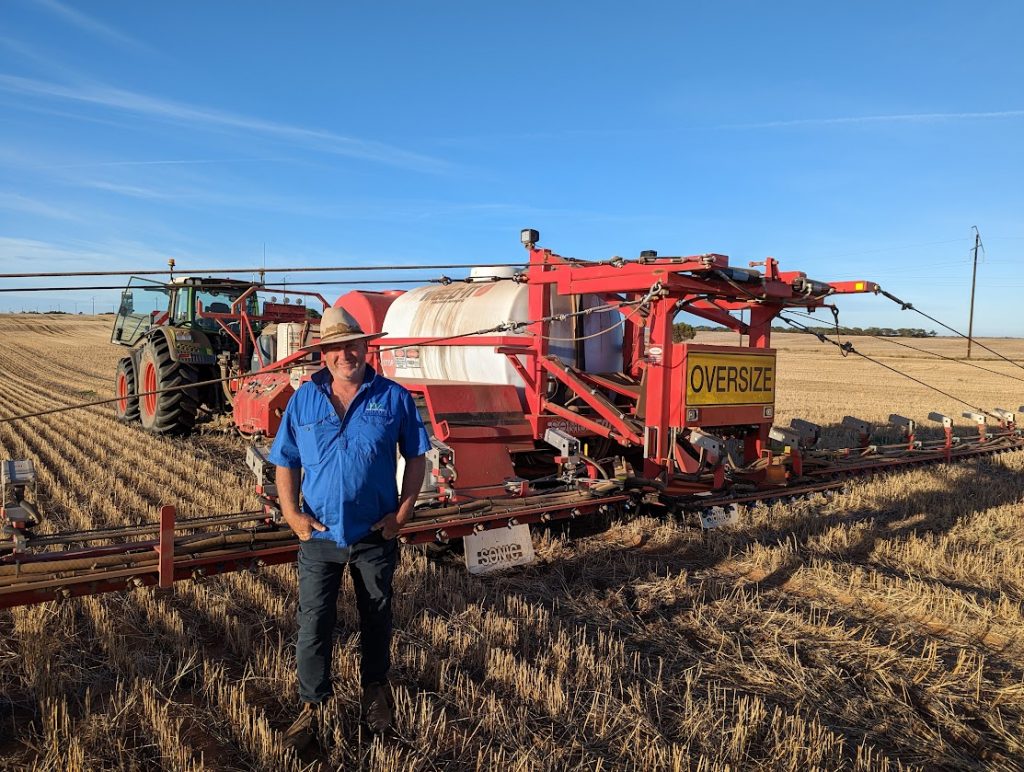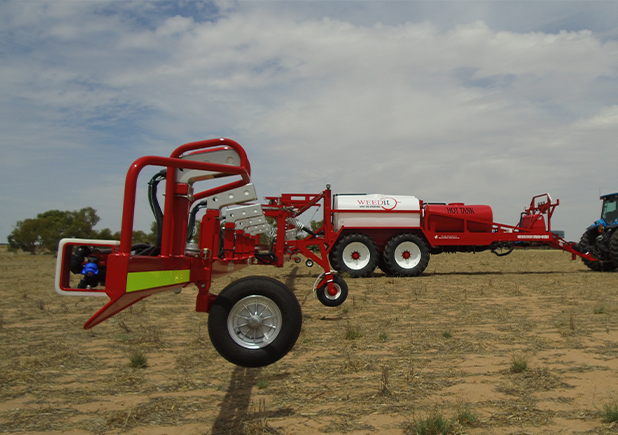SONIC WEED-IT IN SA
22 October 2024


WEED-IT right choice for finances and environment
South Australia grower Brendon Johns says a Croplands WEED-IT sprayer is the only machine he operates that pays for itself in savings.
Brendon and Denise Johns farm north of Adelaide, in the Upper Mid North. Their business is called Northern Grain.
They grow a third each of wheat, barley and lentils, and are working to increase the percentage of lentils up to 50 percent.
All those crops need attention and an intelligent spray program. That means ensuring the right chemical goes on the right plant at the right time. This is good for the crop, the environment and the back pocket.
Ten years ago Brendon and Denise bought their first optical spot sprayer. An optical spot sprayer has sensors on the boom that detect chlorophyl in weeds in fallow and fire spray only at those plants. This is a big saving compared to blanket spraying a whole paddock.
“That was an 800-litre tank with an 80-ft boom and didn’t cover enough ground, but we had it long enough to work out the economics,” Brendon says.
Brendon does the day-to-day management of Northern Grain, while Denise runs the business side. They both have business degrees, and Denise has an MBA.
This gives them a head start as when they bought the original farm off Brendon’s parent’s they considered the structure of the company and set up an advisory board to support growth, communication and governance.
“I wanted to avoid conflict with Brendon about business choices and buying machinery. We needed a discussion process to make important decisions and be accountable for those decisions,” Denise says.
So when they started looking for a bigger sprayer, they needed a way to compare brands which would stand up to scrutiny.
They drew up a matrix of qualities – price, technology, ease of use, servicing, etc. – and rated different models. The winner is their current sprayer, a Croplands Sonic WEED-IT with a 36.6m boom.
The WEED-IT has two tanks with separate controls – a 5000-litre tank broadacre tank and a 1500-litre ‘hot’ tank. They can be used together as a single large tank for one chemical or used separately to do spot-spraying and blanket-spraying and at the same time.
“Going into the seeding season we have flexibility to use different combinations of tanks, depending on the targets.
For example, we can use the main tank to blanket-spray pre-emergent mixes and use the hot tank to spot spray harder-to-kill weeds such as large marshmallows.
Brendon Johns, Northern Grain, South Australia
Over winter they mainly use the WEED-IT with both tanks joined together as a normal boom spray. They have a self-propelled sprayer which does the majority of blanket spraying, while the WEED-IT is the back-up.
“This winter we used them both to spray grubs. When we are busy, we can do up to 1000 ha a day with both sprayers in ideal conditions,” Brendon says.
The joy of spot-spraying is it saves so much chemical. It can use 90 percent less spray in a paddock.
“If we only spray 10 percent of the paddock, it will do enough hectares to pay for itself in three years.”
Denise says not only does the WEED-IT pay for itself in savings, it is also environmentally friendly, because it uses less chemical.
With the WEED-IT, more effective chemicals that cost more also become a viable option.
This is predominantly for summer weeds. It has a good ability to control fleabane and other hard-to-kill weeds using higher rates with products that are not normally economical.
Brendon says
The sensors are spaced 1m apart along the boom and each sensor covers four nozzles. Triple nozzles are on the hot line (the spot sprayer) 250 mm apart, and single nozzles are on the flat line (for blanket spraying) at 500 mm spacing.
Brendon says the Sonic boom follows the contours.
“It is a simple, robust boom spray with little to no maintenance. We find height is important for the sensors, but not as critical as people worry about.”
The WEED-IT offers a variety of ways to fill and mix. It has a venturi system to mix and suck in liquids and powders and powerful pumps to pull in water.
“We often have unskilled labour, like uni students and we don’t let them mix. We usually batch chemicals and suck it straight in.”
Like any machinery, a more experienced person is better, but Brendon says they can easily start people off on the WEED-IT.
“It is relatively simple, so long as they can drive a tractor and use auto-steer. The main control to get right is the sensitivity.
“If it is set too sensitive, it fires too often. If it is not sensitive enough and it misses weeds. But once it’s set up, it’s set and forget.”
The WEED-IT calibrates automatically for different light conditions and speed of travel. Brendon and his crew usually work at about 16 kph using a 300-hp tractor (although he says 200 hp would be enough).
Each year the sprayer covers their farm three times a year in WEED-IT mode. Then it does another 200 hours and covers half of it as the winter back-up blanket sprayer.
Back-up service from Croplands has been easy. “We don’t need much, but if we do, parts are out of Adelaide overnight.”
Maintenance is straight-forward – just greasing, and cleaning the sensors occasionally. They house it in a shed to keep the electronics out of the rain.
While dust, mud and general bouncing around in paddocks can play havoc on electronics, longevity does not appear to be an issue with optical spot sprayers.
“Our first optical spot sprayer was built in 1997. We were the third owner, and it is still being used by the neighbour.”
